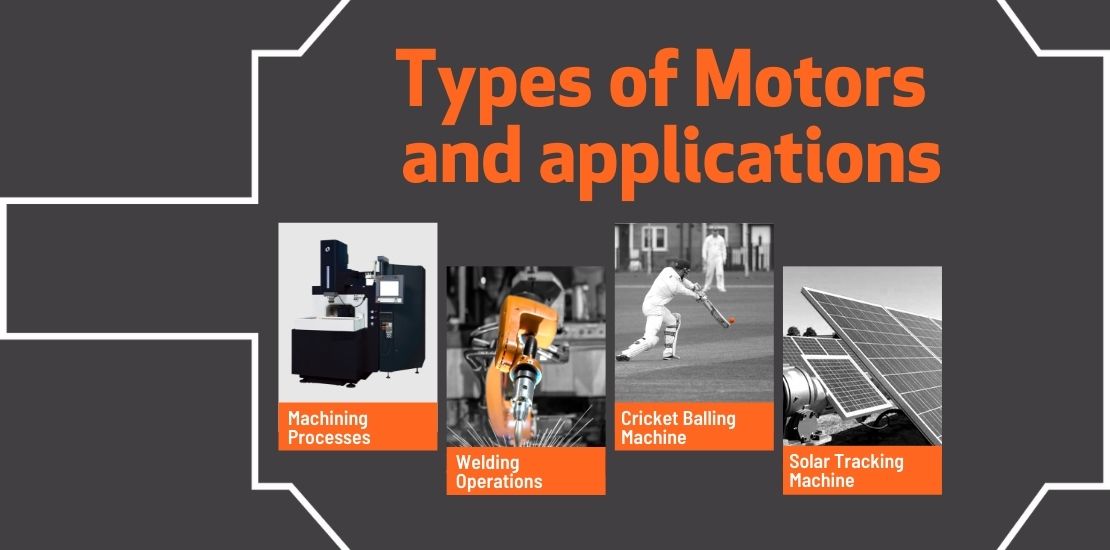Choosing a motor involves considering three key aspects: Application requirements, performance characteristics of the motor, and the type of motor that could deliver such a performance. Motors are broadly classified into three types: DC, AC, and Universal. The construction of a motor determines its performance. For instance, DC motors are capable of delivering variable speeds whereas AC motors offer a fixed speed and consistent performance.
You could explore technical considerations in the selection of motors on our blog here. The present blog discusses various types of motors and their significant characteristics with respect to choosing the perfect motor for your application.
Universal motors
Universal motors fit both AC and DC applications that need a low-cost, high-speed motor with an intermittent duty cycle. These motors are durable and can perform in high-vibration applications. On the performance front, a universal motor can have twice the output power as that of a similarly sized AC motor.
A key downside of universal motors is that they have high noise, and may not be used in areas where noise is a constraint. Additionally, it is not advised to run universal motors at very low voltages. Running a universal motor at lower than 100V voltage results in a drastic fall in motor efficiency.
Construction
In these motors, the armature and the field are wound with magnet wire, and the armature is electrically connected through the commutator and brushes. The universal motor can run on both AC and DC power and is capable of running at extremely high speeds of up to 20,000 RPM. Due to these characteristics, universal motors are suited for specialized applications.
Speed torque curve
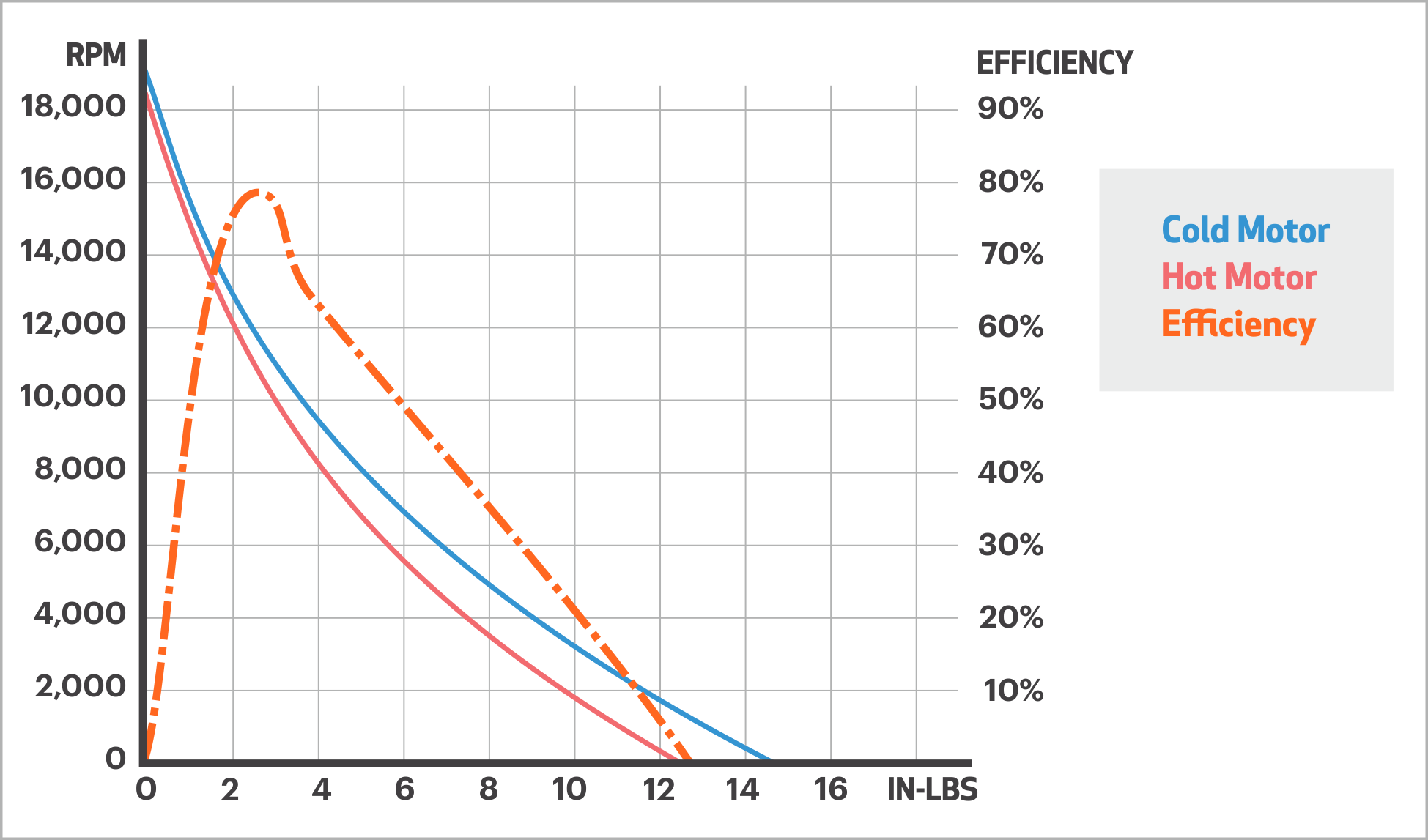
Given above is the speed torque curve of a universal motor. With a good starting torque, the cold motor curve is fairly linear. As the motor heats up, its running speed decreases, as can be seen from the hot motor curve.
The black line shows the motor’s efficiency. Under ideal circumstances, the motor’s peak efficiency will occur close to the motor operating torque. However, in practical situations, it occurs at a higher torque than the rated torque.
Efficiency: between 55%-70%
Advantages
- High starting torque
- High power density
- Low cost
- Portable
- High life expectancy of 500-2000 hours
- Runs without a controller
Disadvantages
- High noise
- Lower efficiency at low voltages
- Quick burnout in stalled conditions
- Require high maintenance
DC motors
DC motors are typically suited for applications that require a high starting torque and those that are low-power. They can run on AC power as well as AC line voltage using a rectifier. DC motors can work without control, but controls can be used if the motor speed needs to be regulated.
If a DC gear motor is being used, the high starting torque can damae the reducer
Construction
A DC motor is made up of a wound armature, a commutator, and brushes that interact with the magnet within the housing. DC motors feature an enclosed construction, which makes them the best fit for use with gear reducers. The operating speed can range between 1000 to 5000 RPM. The brushes of the DC motors must be inspected regularly and changed after every 2000 hours for the optimum lifespan of the motor.
Speed torque curve
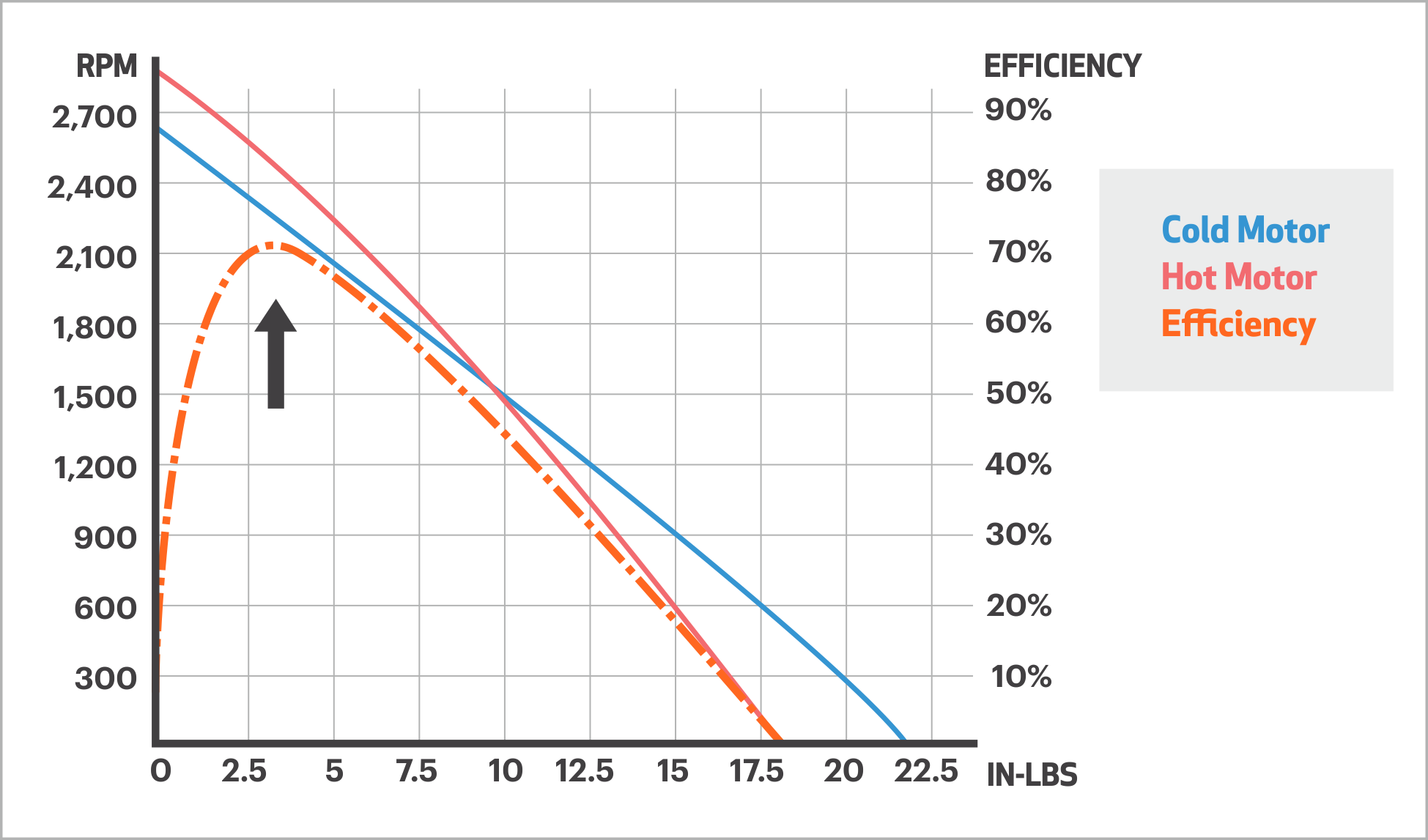
In the cold state, DC motors have a straight speed-torque curve with low no-load speed and high starting torque. As the motor temperature rises, the no-load speed also increases due to the effect of heat on the magnets. The speed returns to normal as the motor cools down. At the other end of the curve, the stalled torque for the hot motor is reduced.
Under ideal conditions, the motor will have its peak efficiency near the operating torque.
Efficiency: between 60%-70%
Advantages
- Works smoothly with gearboxes
- Can operate without control
- Low cost
Disadvantages
- Need high maintenance
- Noise created by brushes
- Might witness cogging at speeds below 300 RPM
- Possibility of power loss with AC voltage
AC induction motors
AC motors are one of the most commonly used motors in the world because they can run using the AC voltage that comes from common wall outlets. The output speed of the motor is relatively fixed and is influenced by the number of poles with which the stator is wound and the frequency of the input voltage.
Depending on its winding, the AC motor can be a single-phase or a three-phase motor. Single-phase motors again have a number of subtypes such as Capacitor start, Permanent split capacitor, Split phase, and many others. In many cases, single-phase AC motors might have less starting torque than the rated torque. Hence, three-phase motors are preferred.
Construction
A typical AC motor features a wound stator, a rotor comprising cast aluminum and lamination, and a shaft. The performance of the AC motor is largely determined by the winding of the stator. The commutation of the AC induction motor is somewhat similar to DC motors. The key difference is that the AC motor winding uses the AC voltage power to achive commutation without requiring the brushes. The currents induced in the rotor create the magnetic field.
Typically, AC motors could have a limited fixed speed of up to 3400 RPM, and the speed is not affected by the value of the input voltage.
Efficiency: 40%-70%
Speed torque curve
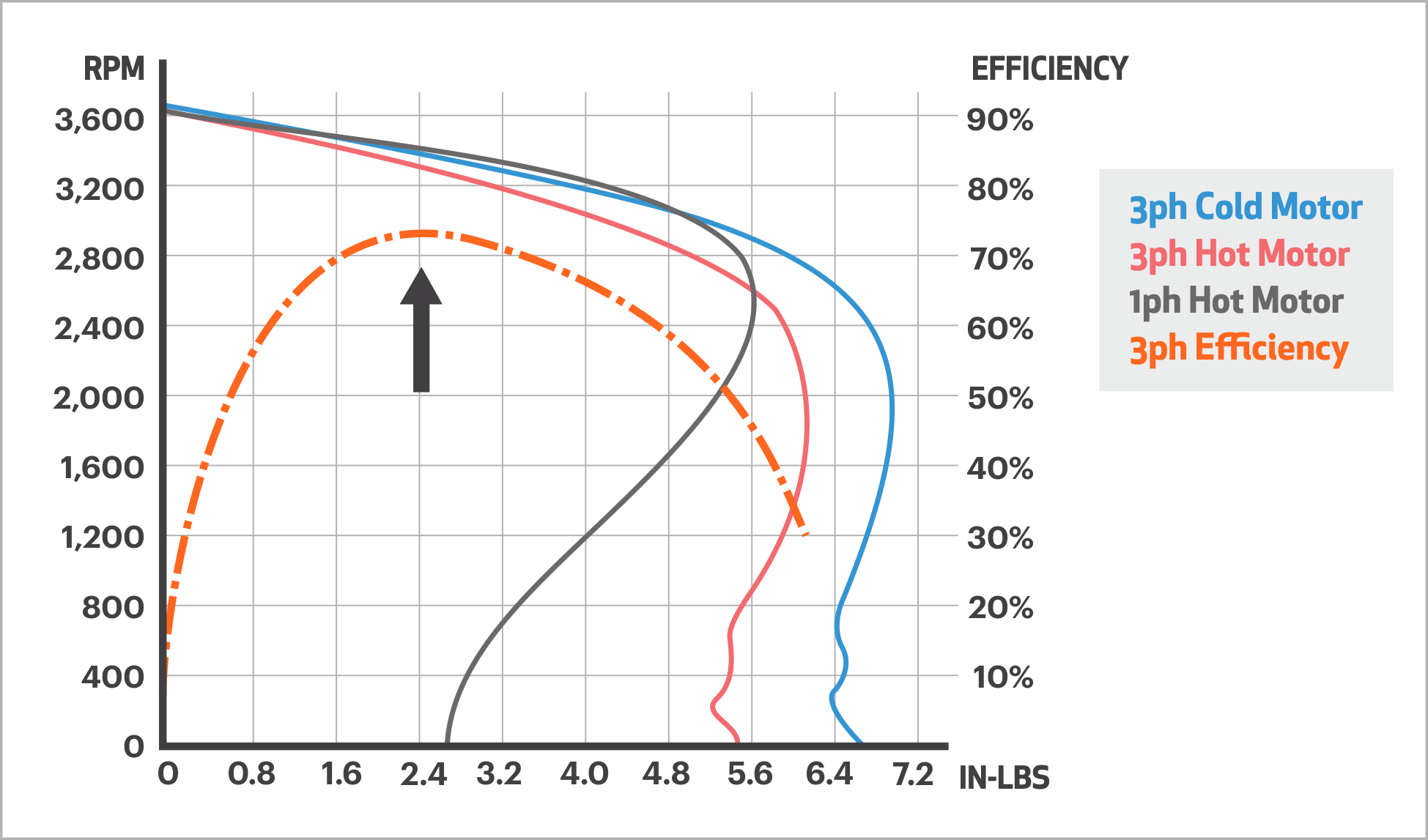
The performance curve of a 3-phase AC motor is linear and flat until the breakdown torque is reached. After reaching the breakdown, the torque falls drastically and falls back to an extent. In a single-phase AC motor, the fallback is even more.
In ideal conditions, the peak efficiency of the AC motor will be near the motor’s operating torque.
Advantages
- No common wear parts
- Long lifespan
- Low maintenance
- Maintain speed over a wide range of torque
- Compatible with gearbox
- Compatible with speed control
Disadvantages
- Low starting torque
- Poor speed control
- Low power levels compared to the size
- High cost per horsepower
- Not portable
BLDC motors
BLDC motors have a near maintenance-free design and high power density and are best suited for applications that require variable speed and little to no maintenance.
Construction
BLDC motors appear similar to AC motors in construction due to their lack of brushes. The rotor is this motor is made up of rare earth magnets to produce the magnetic field. BLDC motors are electronically commutated by a control. BLDC motors are capable of receiving feedback from sensors that determine the location of the toro or they can measure the the voltage in the coils to determine where the rotor is located.
The speed-torque characteristics of the BLDC motors are similar to brushed DC motors.A key difference is that BLDC motors need hall effect sensors along with a moor control in order to commutate. Bening paired with a controller renders BLDC motors suitable for applications that work at variable speeds. The efficiency of BLDC motors stands between 60% to 80%
Speed torque curve
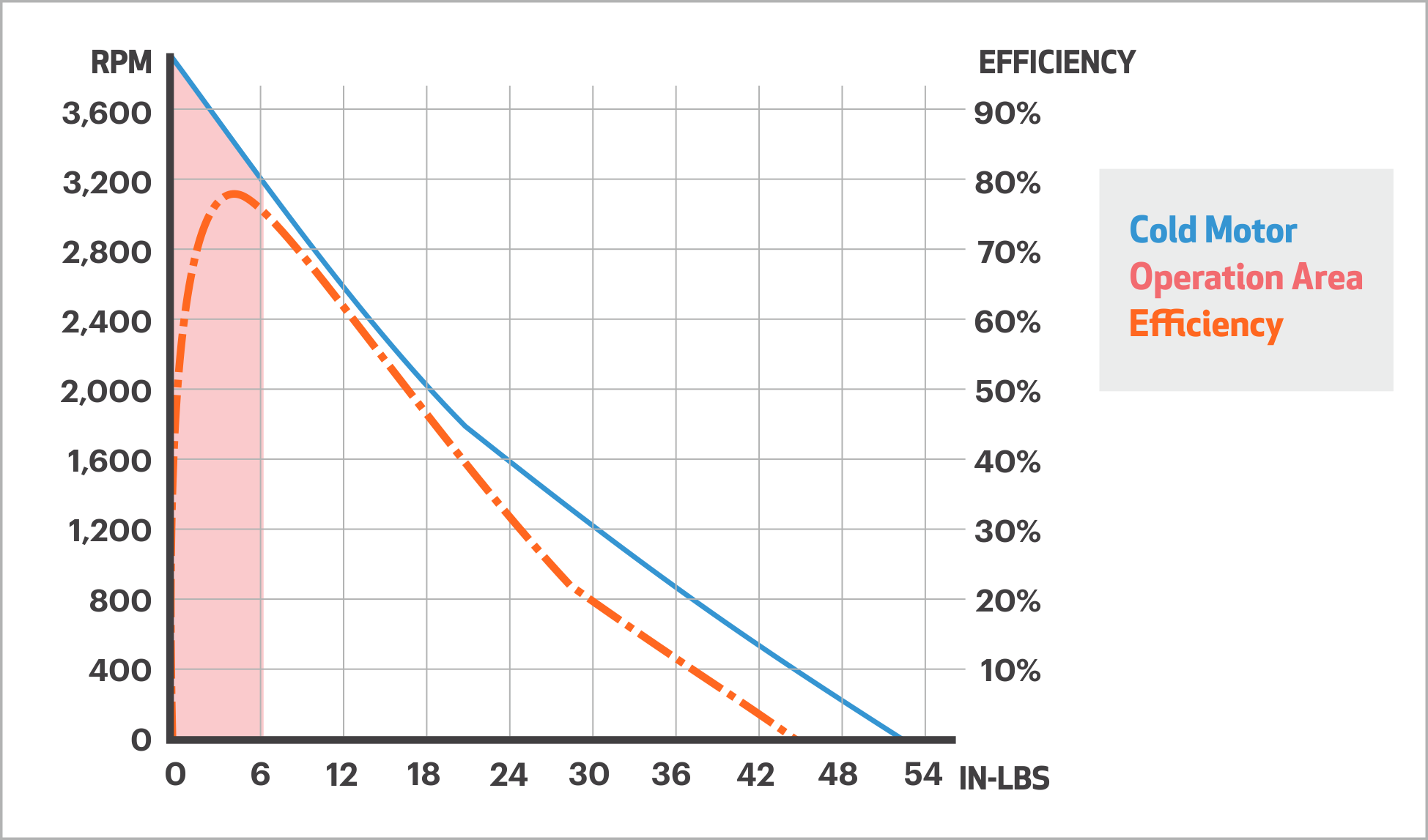
The speed torque curve of the BLDC motor shows the motor performance with full voltage applied, but without the control impacting the performance. The right torque is the key to operating a BLDC motor, and the maximum torque rating of the motor is independent of speed. On the downside, if the speed is less than 300 RPM, the motor may face cogging. However, control and feedback systems can be used effectively to minimize cogging
Advantage
- Long lifespan
- Low maintenance
- Low noise
- Variable speed
- High starting torque
- High power density
Disadvantages
- High cost
Customized motors
Customized motors could save the user the effort of trying to choose a motor that fits their application. Instead, a motor can be built to suit the specific needs of the application. Motors could be customized in two different ways: Modifying an existing motor to fit application needs, or building a completely new motor from scratch.
Modifying an existing motor
Modifying an existing motor entail making changes to the motor design without altering its frame size. It is the easier, quicker, and more cost-effective way of obtaining a motor that fits your application. Such motors feature changes to the motor housing and mounting, custom windings, modified output shafts, mounting faces, and end bells, among other modifications. Accessories such as encoders, breaks, or Tach generators could also be added.
An experienced designer could ensure more output power from the motor for intermittent duty cycles without increasing the size of the motor.
Building a new customized motor
Given the cost and complexities of this activity, complete custom-built motors are designed only for high-volume applications and have proprietary designs. Even though these motors entail a high initial investment, the high degree of customization means the user gets the desired performance and the payback time is pretty short.
Pranshu Electricals is a leading manufacturer of motors in India, with a decade of experience and expertise in the design and manufacturing of customized motors.
For more information get in touch!
